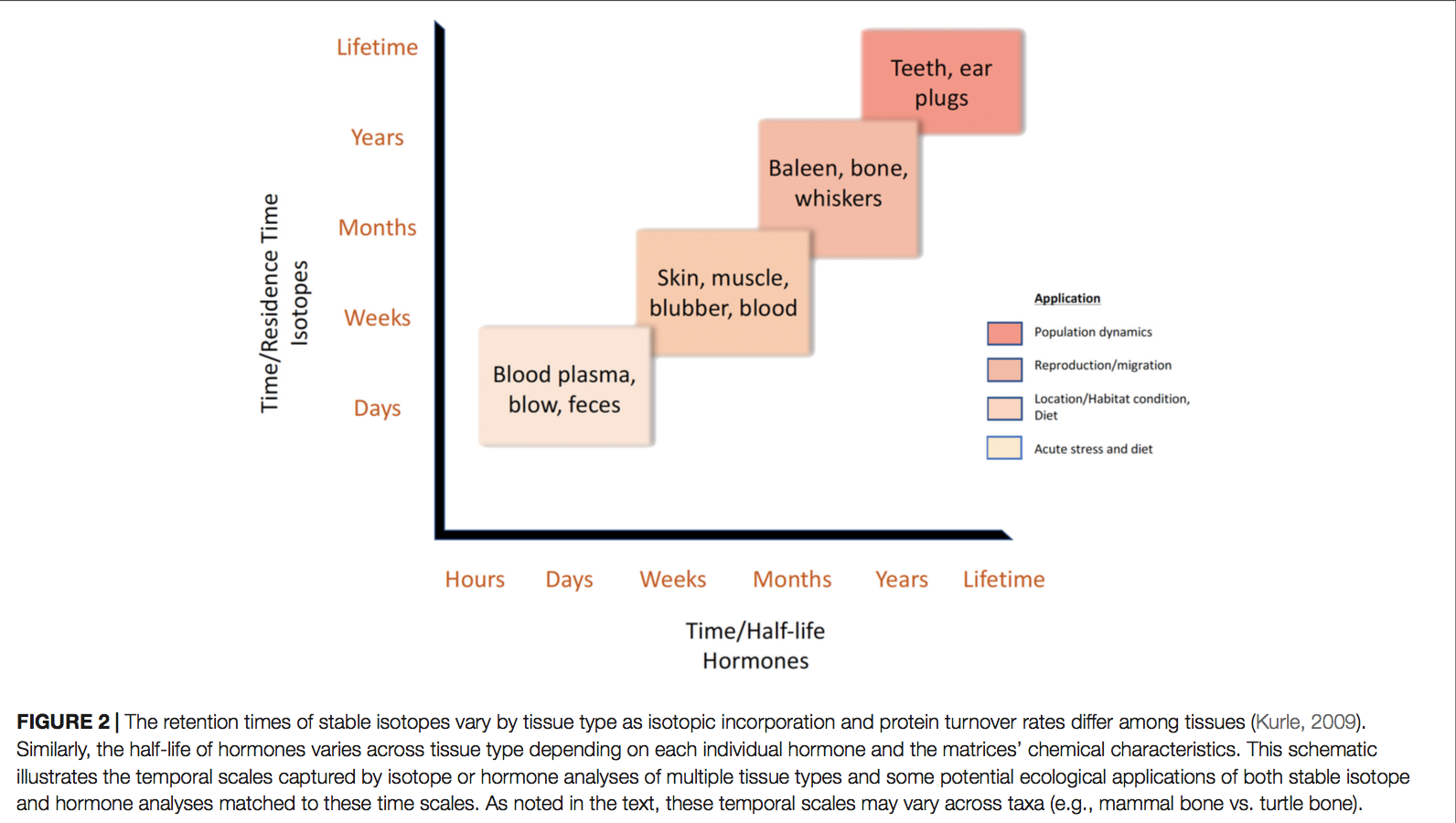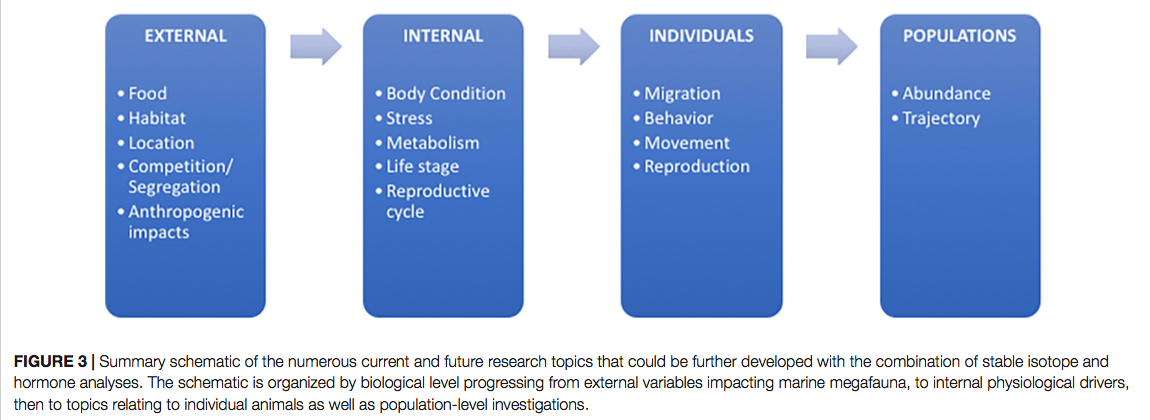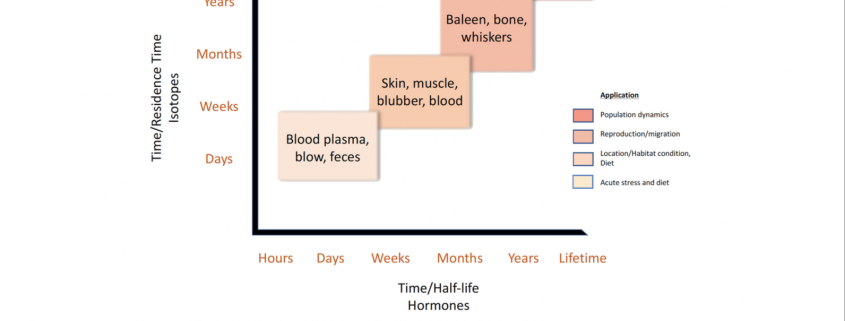The Utility of Combining Stable Isotope and Hormone Analyses for Marine Megafauna Research
By: Olivia Wigon, SRC Intern
Marine megafauna face many threats such as ship strikes, climate change, ocean noise and habitat destruction, which have caused many populations to decline. Typically, conservation takes a reactive approach instead of a proactive one which makes it hard to maintain healthy populations of marine megafauna. Alyson H. Fleming and her team are working with stable isotope and hormone analysis to understand in a more in-depth way how megafauna, specifically cetaceans, pinnipeds and sea turtles, are responding to their ever-changing environments (Fleming et al. 2018). The team is looking at physiological biomarkers that can help explain an animal’s movements, nutrition, stress, health and reproductive information. This data can give scientists and conservationist enough time to react proactively to the issues marine megafauna are facing. For example, looking at the ratios of stable carbon and nitrogen in bulk tissues Fleming and her team can determine not only the animal’s habitat but also its trophic level. This is made possible because the carbon and nitrogen isotopes found in bulk tissue indicate the biogeochemistry in the base of the food web. In addition to looking at stable isotopes the team looked at hormone levels. Hormones connected to reproduction can reveal an animal’s maturity, sex, whether or not the animal is pregnant, birth rates, sex ratios and more. Along with reproductive hormones there are stress hormones which can show predator exposure and areas of nutritional deficits. There are also thyroid hormones that will show an animal’s nutritive levels.

Some of the challenges with this research is that different tissues and different isotopes have different half-lives. The half-life rate varies based on the rates of protein metabolism. It is important to note that a tissue type can have different half-life rates based on the species and individual. Hormone analysis on the other hand is typically similar across vertebrate species however, the physiological roles of each hormone can have a different role in each species. Despite these challenges this is a growing and developing field of study. Integrating the results of stable isotope analysis with hormone analysis can answer many questions among many biological levels. When trying to solve a conservation issue it is best to have several lines of evidence which this process creates. Since this is a new and emerging field, there is still work to be done in regards to establishing methodology.

Work Cited:
Fleming, A. H., Kellar, N. M., Allen, C. D., & Kurle, C. M. (2018). The Utility of Combining Stable Isotope and Hormone Analyses for Marine Megafauna Research. Frontiers in Marine Science, 5, 1-15.



